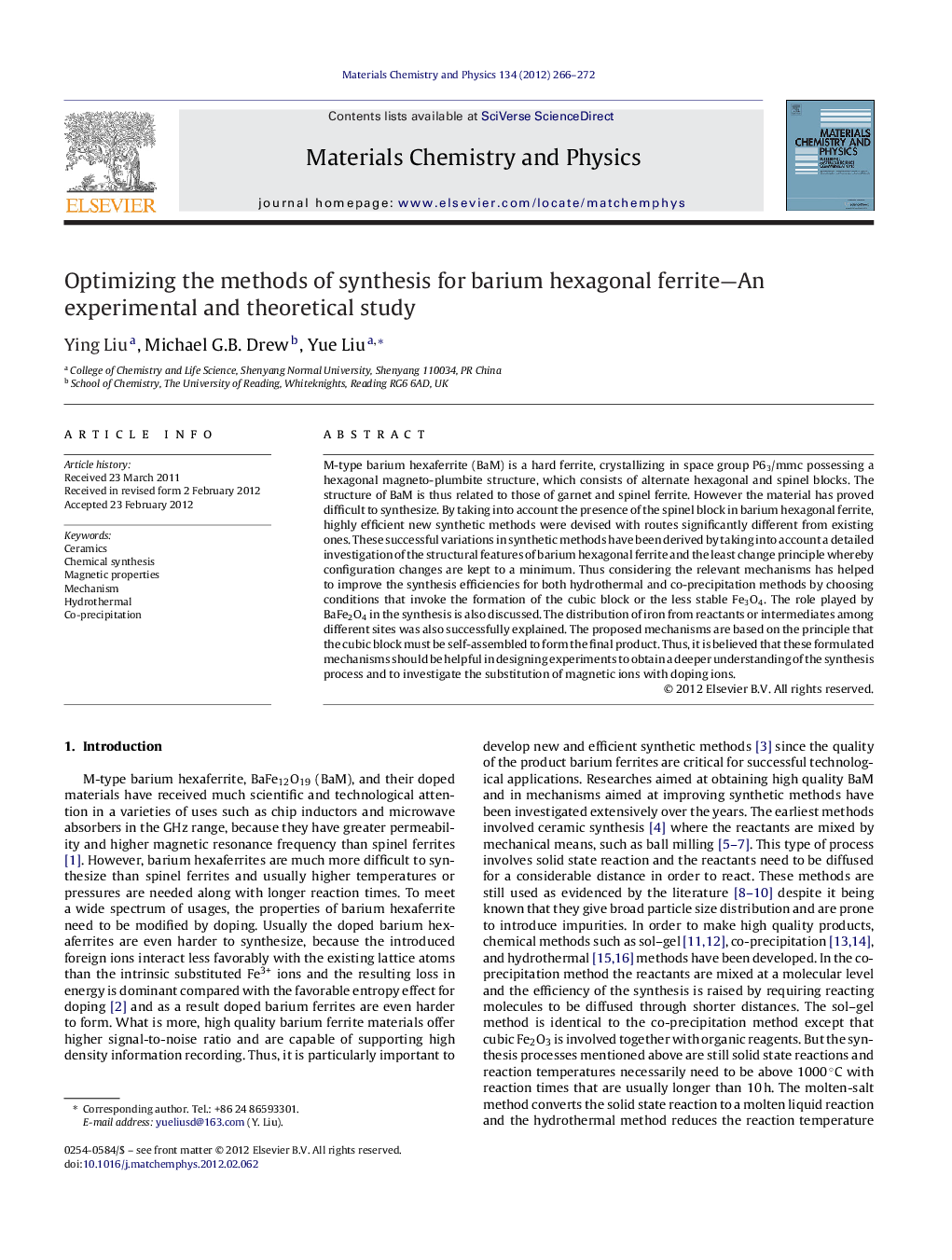| Article ID | Journal | Published Year | Pages | File Type |
|---|---|---|---|---|
| 1524012 | Materials Chemistry and Physics | 2012 | 7 Pages |
M-type barium hexaferrite (BaM) is a hard ferrite, crystallizing in space group P63/mmc possessing a hexagonal magneto-plumbite structure, which consists of alternate hexagonal and spinel blocks. The structure of BaM is thus related to those of garnet and spinel ferrite. However the material has proved difficult to synthesize. By taking into account the presence of the spinel block in barium hexagonal ferrite, highly efficient new synthetic methods were devised with routes significantly different from existing ones. These successful variations in synthetic methods have been derived by taking into account a detailed investigation of the structural features of barium hexagonal ferrite and the least change principle whereby configuration changes are kept to a minimum. Thus considering the relevant mechanisms has helped to improve the synthesis efficiencies for both hydrothermal and co-precipitation methods by choosing conditions that invoke the formation of the cubic block or the less stable Fe3O4. The role played by BaFe2O4 in the synthesis is also discussed. The distribution of iron from reactants or intermediates among different sites was also successfully explained. The proposed mechanisms are based on the principle that the cubic block must be self-assembled to form the final product. Thus, it is believed that these formulated mechanisms should be helpful in designing experiments to obtain a deeper understanding of the synthesis process and to investigate the substitution of magnetic ions with doping ions.
► Old synthesis route has been altered to increase the hydrothermal and co-precipitation synthesis efficiency of barium hexagonal ferrite. ► Detailed mechanisms have been proposed for the relevant new synthesis methods. ► The mechanisms are based on the structural features of barium hexagonal ferrite, the least change principle, and experimental facts.
